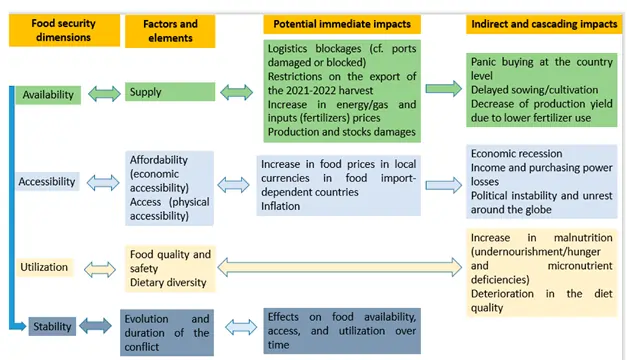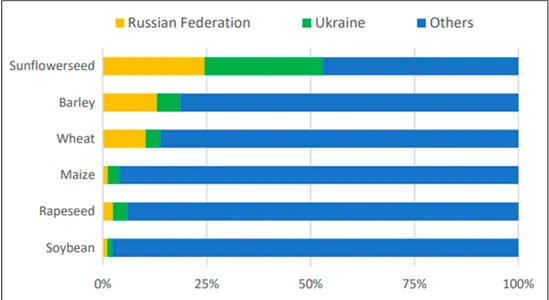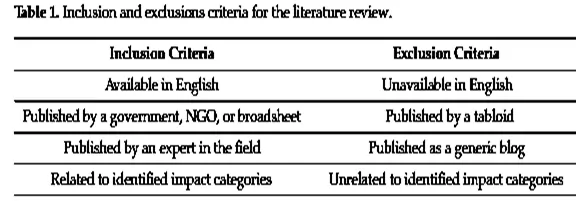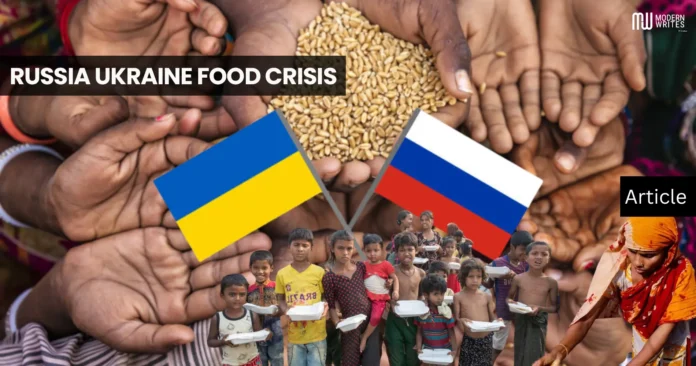Abstract
Food is one of the most traded commodities, and the conflict in Ukraine, one of Europe’s breadbaskets, has significantly disrupted the global food supply chains following the COVID-19 pandemic. The disruption may have a long-term impact on meal production, supply chains, availability, and affordability. As a result, the quantity and availability of a variety of meals, raw materials, and finished merchandise are in jeopardy, and food prices have recently improved on the global market. Globally, the Russia-Ukraine war is causing negative socioeconomic impacts on various levels, with the potential for further escalation, particularly in the realm of food security. Russia Ukraine Food crisis
This is because the war is a battle between two significant agricultural powers. Many countries, particularly those that rely on meal imports, such as those in the Middle East and North Africa (MENA) region, will face significant challenges if the battle escalates further. The COVID-19 pandemic supply chain disruptions, excessive global demand, and subpar harvests in a few regions made meal charges already excessive at the beginning of the war, which was unfortunate for the sector’s meal markets. Understanding the overall impact on global food security and how conflict-related disruptions in the food and fertilizer markets could affect pricing and availability is essential.
The consequences of the war’s impact on food security for four months also imply that this evaluation is important, urgent, and overdue. Therefore, the purpose of this report is to examine the direct and indirect effects of the Russia-Ukraine war on world food security. The report underscores the immediate and extensive cascading effects of the war on global food security, including the cessation of exports from Ukraine, manpower shortages due to enlistment and population displacement, restricted access to fertilizers, and uncertainty about future crops.
First, Ukraine hasn’t been able to use its export potential. Second, there was a shortage of labour due to conscription and population displacement caused a shortage of labor. Thirdly, it is hard to get important agricultural products like fertilizers. The battle might put off planting in the spring and harvesting winter crops. Additionally, the war has indirect and domino impacts. In fact, increasing fertiliser costs could result in lower fertiliser use and crop yields. Furthermore, as demonstrated during the 2007–2008 food crisis, export limitations and speculative activities are driving up global prices and exacerbating the situation. The war also sparked a fear-buying trend in both the public and specific situations. The fighting may jeopardize the Sustainable Development Goals (SSDGs), specifically SDG 1 (NNo Poverty), SDG 2 (ZZero Hunger), and DG 12.
Nevertheless, a number of underlying rigours, sins, and inefficiencies in the world’s food systems are exacerbating the effects of the war on food security. Therefore, we must advocate for both immediate and long-term reforms and programmes to facilitate the shift towards healthy, indifferent, and environmentally sustainable food systems. The Russian-Ukrainian conflict has also had a negative impact on food supply chains, with major changes in demand between countries that depend on Ukraine, as well as considerable impacts on product, sourcing, manufacturing, processing, and logistics. The use of alternate food raw materials, suppliers, and supply chain partners supported by technical developments to maintain food safety and quality under warlike scenarios are some of the solutions and tactics to mitigate supply chain impacts.
Russia As a result of Russia’s invasion of Ukraine, food costs are rising globally. Developing and rising economies suffer severe harm due to their reliance on the region for petroleum and grain imports. Price increases in these countries may lead to more political unrest and, perhaps, violence. Ukraine is the world’s largest collector of sunflower oil paintings. Together with Russia, it accounts for more than half of all vegetable oil painting exports worldwide. Moreover, the region exports 36% of the world’s wheat. The supply of vital items has extensively decreased as a result of the war in Ukraine and the sanctions imposed on Russia. As a result, food expenses have expanded globally.
Statement of problem
Fears of a global food disaster are intensifying due to Russia’s unjustifiable invasion of Ukraine, a country known as the “breadbasket of Europe,” which is further highlighting contemporary food safety issues worldwide. The way the global network, including the EU, reacts to positive events that are unexpectedly converting will determine a variety of factors.
Introduction Russia Ukraine Food crisis
We have described meal security as the ability for all individuals to always have physical and financial access to sufficient, secure, and nutritious food to satisfy their dietary needs and food options for a healthy and active lifestyle. The four dimensions of food protection are availability (regularly having a sufficient amount of meals available), get entry to (having the sources to buy suitable and wholesome food), utilisation (the usage of meals in a reasonable way given expertise in fundamental nutrition and care), balance of availability, get right of entry to, and intake of meals.
Although these four factors continue to be important, they lack other characteristics, including agency and sustainability, that are now understood to be crucial for changing food systems in the direction needed to achieve the SDGs. Substantiation suggests that wars and conflicts are the primary causes of food insecurity worldwide. In 2021, 139 million people across 24 countries and households experienced extreme food instability, primarily due to war and insecurity. On February 24, 2022, Russia began a full-scale military assault on Ukraine. Consequently, the assault resulted in civilian failures, injuries, and the destruction of an important infrastructure.
The United States, Europe, and many other western nations (such as Canada and Australia) have imposed increasingly sweeping sanctions against individuals, banks, firms, big state-owned businesses, and exports. The war’s most serious aftereffects are the deaths it has caused and the humanitarian catastrophe that many trapped and displaced people in Ukraine have brought about. The war has simultaneously caused significant damage to the markets for commodities, particularly food and energy, and has had an impact on global trade, production, and consumption patterns in ways that will keep prices at historically high levels until the end of 2024, endangering global food security.
In fact, the battle is causing widespread concern about global food security due to the globalization of agricultural markets and the fact that it is a conflict between two significant participants in the global food and fertilizer industries.
Russia and Ukraine, regarded as the “global breadbaskets” despite having only 2% of the world’s GDP, are significant producers and exporters of essential agricultural commodities, minerals, fertilizers, and energy, with exportable resources frequently concentrated in a small number of nations. This concentration could make these markets more susceptible to volatility and shocks. In addition, food prices were already high due to supply chain disruptions brought on by the COVID-19 epidemic, high global demand, a drought, and subpar crops in South America the previous year. The war also came at a horrible time for the world’s food markets. Together, these elements raise food prices. The conflict between Russia and Ukraine will make these problems worse.
Four months into the war, the quality of goods has deteriorated significantly; exports from Ukraine have ceased, the future of unborn crops remains uncertain, and the price of agrarian goods has skyrocketed, jeopardizing the livelihoods of millions. Similarly, the reduction of philanthropic aid to treat acute malnutrition could lead to price rises and trade dislocations, potentially increasing the number of people experiencing gluttony. According to the World Food Program (WWFP), the number of people passing acute hunger will increase by an additional 47 million from the pre-war birth of 276 million.
By 2022, over 323 million people may witness acute food instability, according to this statistic. 10 million people fall into extreme poverty for every chance-point increase in food costs, according to estimates from the World Bank.
More than 100 million people may fall into poverty worldwide if food prices stay this high for a long time. There’s a great deal of uncertainty about the war’s impact on food security in the medium (six months to two times) to long-term (more than two times). This covers both the direct charges of the conflict and the goods of the warrants placed on Russia now and in the future . In that scenario, the combined effects of the war and the warrants will significantly impact global agricultural demands and food security, resulting in global shockwaves, particularly in import-dependent low- and middle-income countries (LLMICs) . For illustration, some nations in the Middle East and North Africa (MMENA) region import more than 50% of their cereal needs, particularly wheat, from Ukraine and Russia.
Background Russia Ukraine Food crisis
Ukraine and Russia no longer have any diplomatic or bilateral ties. Considering the fact that on February 24, 2022, there was a state of war in several locations across the globe, Following the Ukrainian Revolution of Dignity in 2014, unmarked Russian forces invaded and, in the long run, occupied Ukraine’s Crimean Peninsula, sparking the start of the Russo-Ukrainian struggle. At the same time, seasoned Russian rebels engaged the Ukrainian military in a war to manipulate eastern Ukraine. On February 24, 2022, Russia launched a full-scale invasion of the Ukrainian mainland, intensifying the conflict and compelling Ukraine to sever all formal diplomatic connections with Russia.
In bilateral relations, several successor states have experienced periods of visible ties, tensions, and outright hostility due to the fall of the Soviet Union in 1991. Early in the 1990s, Ukraine’s foreign policy balanced its cooperation with the European Union (EU), Russia, and other countries, prioritizing the protection of its sovereignty and independence. Following the 2014 Ukrainian Revolution, which resulted in Russia’s annexation of Crimea from Ukraine, and the Donbass War, during which Russia supported the separatist rebels of the Donetsk Humans’s Republic and the Luhansk Humans’s Republic, the relationship between the two nations deteriorated.
By the start of 2020, the hostilities had claimed more than 13,000 lives and led to Western sanctions against Russia. The family’s finances suffered, leading to the cancellation of numerous bilateral agreements. A Russian army assembling on Ukraine’s border in 2021 and 2022 heightened pressures and deteriorated bilateral ties between the two countries. In response to Russia’s irruption of Ukraine in 2022, Ukraine disassociated political ties with Moscow. Numerous thoroughfares in Ukraine, adorned with the names of Russian major figures, as well as monuments commemorating the friendly relationship between Russia and Ukraine, underwent demolition.
Both Russia and Ukraine assert that Kievan Rus, a government that unified the majority of East Slavic tribes and some Finnic tribes and embraced Byzantine Orthodoxy in the ninth to eleventh centuries, is where they derive their ancestry.
Old Rus chronicles named Kyiv, the capital of modern Ukraine, the Mother of Rus Cities, as the seat of the mighty late-mediaeval empire of Rus. During the February Revolution, the Russian Provisional Government established diplomatic contacts with the Ukrainian Central Rada (Central Council of Ukraine), whose commissar Petro Stebnytsky represented it at the Russian government. At the same time, the Ukrainian cabinet appointed Dmitry Odinets to represent Russian affairs.
Following the Soviet government’s military aggression at the start of 1918, Ukraine proclaimed its complete independence from the Russian Republic on January 22, 1918, becoming the Ukrainian People’s Republic, which lasted from 1917 to 1922. Ukraine and Russia separately signed the Brest-Litovsk Treaties with the Central Powers, ending their armed hostilities and initiating peace talks in the same year. The Ukrainian War of Independence, which was connected to the Russian Civil War, saw action there following the conclusion of World War I. Russians and Ukrainians participated in almost every army, reflecting their individual political ideologies.
Ukraine and Russia signed the agreement that brought the Union of Soviet Socialist Republics to an end in December 1991. In 1922, both international locations became founding members of the union. The Ukrainian language was no longer forbidden. Following this came a period of korenizatsiya, which fostered the cultures of the many Soviet republics.
Policy Implications Russia Ukraine Food crisis
The majority of acute meal emergencies result from violent battles. In 2021, a minimum of 150 million individuals across 10 global regions experienced acute food insecurity, with eight of these regions experiencing violent conflicts. An armed struggle between the Russian Federation (Russia) and Ukraine intensified on February 24, 2022. The disruptions in wheat production and export, coupled with increased prices in growing countries that heavily rely on imports, could exacerbate the already precarious food security situation in many developing nations. Russia and Ukraine are important exporters of wheat.
This study appears to illustrate the potential impact of the ongoing conflict between Russia and Ukraine on wheat prices, consumption patterns, and calorie intake.
The study shows that, on average, a 1% decrease in the global wheat market should increase the price of wheat by 1.1%, while a 1% increase in the producers’ price should reduce the annual consumption of wheat by 0.59 percent of daily calories. 54%, and protein intake through zero. Sixty-four percent of the international locations under study are in the sample. Primarily based on this, the evaluation suggests that a 50% decrease in Russian and Ukrainian wheat exports would possibly bring about a 15% growth within the rate of wheat for producers, which could bring about a minimal 8% lower in wheat intake and nutritional strength consumption.
Given the decline in wheat exports from Russia and Ukraine, we propose policies to avert a food crisis in developing nations. These policies include enhancing domestic wheat production in the short term through improved agronomic practices, thereby bridging yield gaps and achieving significant wheat self-sufficiency targets. Long-term expansion of wheat cultivation into new land areas is a possibility for nations in Africa, East Asia, and South America. International donor organizations can greatly help ongoing research and development efforts involving wheat can benefit greatly from the support of international donor organizations.

Figure 1 shows the effects of the Russia-Ukraine war on global food security.
The war’s immediate effects on food security are significant
The war has had multiple immediate and direct effects on food security, including disruptions in harvesting and shipping, as well as significant changes in prices and availability of basic commodities. First, military action may have both short- and long-term effects on Ukraine’s ability to transport agricultural goods within and outside its borders if it destroys port infrastructure and railroads. In fact, the conflict immediately impacted grain exports from Ukraine, particularly those of maize, which generally arrive in the country in the spring and early summer. Russia Ukraine Food crisis
Indeed, Odessa, Mariupol, and Kherson ports—which have sustained serious damage—handle 95% of Ukraine’s seaborne grain. The closure of all Black Sea ports has also rendered the majority of Ukrainian exports impossible. Even if inland transportation infrastructure remained intact, shipping grain by rail would be challenging due to the absence of a functional railway system. For instance, four traders announced on May 17, 2022, that about 300,000 tonnes of Ukrainian wheat ordered by Egypt’s state grain buyer for delivery in February and March were stuck in Ukraine, with one cargo being held in port and four others needing to be loaded.
This information comes from Reuters . Potential alternatives to using Ukrainian ports include exporting food via Poland or Romania. Western politicians have lined up to support these ideas in recent weeks. Alternative approaches might increase exports, but experts believe that this won’t be enough to meet the world’s food demand.
There are many difficulties, as the rail gauge in Ukraine is different from that of the majority of EU countries. It will take some time to increase storage capacity. Additionally, the Constanta port in Romania is unable to control the influx of Ukrainian crops. However, with investments in port infrastructure and rail networks, particularly for nations in North Africa. Furthermore, the length of the embargo is unknown, making it difficult to attract private investment for the infrastructure needed for such alternatives. Additionally, rising insurance prices for the Black Sea region would worsen already high transportation costs, increasing the cost of imported food.
In addition, the war had already prevented farmers from working in their fields, and population shifts and conscription had led to labour shortages. We anticipate disruptions to essential public services to adversely affect agricultural activities. This problem is exacerbated by reduced availability and access to vital agricultural inputs, such as fertilizers. As a result, the war may interfere with the ongoing spring planting campaign and the impending harvesting of the winter crops, which typically occurs in June or July.
For instance, the safe transportation of seeds to farmers is a significant concern, even if the number of seeds (both local and foreign) available would be sufficient to plant 70% of the expected spring area. According to FAO, this could prevent the harvest or farming of one-third of crops and agricultural land by 2022. It is also unknown whether other exporters will be able to fill the void. Thirdly, due to economic sanctions placed on Russia, there is a great deal of uncertainty about Russian export prospects in the future. Russian Black Sea ports remain open for the time being, and no significant interruption to agricultural production is predicted in the near future. Russia Ukraine Food crisis
However, the financial sanctions imposed on Russia have resulted in a significant devaluation, which, if sustained, may impede productivity and development while eventually raising agricultural output costs. Furthermore, in April 2022, Russia vowed to limit agricultural and food exports to only ‘friendly’ countries in response to Western sanctions. The restrictions would exacerbate the global food supply. A continuing war and sanctions would probably raise prices and weaken food security for hundreds of millions of people.
The war’s indirect effects on food security are significant
The battle also has certain unintended and rippling effects. First off, prices for essential commodities like fertilizer are approaching all-time highs. As a result, many farmers around the world, including those in the United States, are switching out expensive fertilizer-dependent crops like wheat and maize for low-cost ones like soy. This could exacerbate the current supply shortages and drive up the cost of bread, cereals, and other essential food items because soybeans are primarily used in animal feed and biofuel. Similarly, low availability and high pricing of fertilizer may have negative effects, especially in underdeveloped nations where price consequences may severely restrict consumption and lead to lower yields during low worldwide supply and high global prices.
The impact of the war on the global cereal market is significant
For barley, wheat, and maize, Russia and Ukraine make a significant contribution to the world’s supply of grains. The two countries produced 19%, 14%, and 4% of the world’s supply of these crops, respectively, between 2016–17 and 2020–21. Russia and Ukraine were two of the top three exporters of wheat and maize.

Figure 2. Russia and Ukraine’s share of selected crops’ global exports.
Conceptual Link
Methodology
Grey literature serves as a valuable source of information for large-scale review syntheses, particularly those that deal with current and developing issues . A grey literature search plan should include the resources, search criteria, URLs, and usage restrictions. The PRISMA (Preferred Reporting Items for Systematic Reviews and Meta-Analyses) standard requires a full search strategy of at least one database, which includes all search terms and combinations, the name of the person conducting the search, the date of the search, and a description of all information sources used in the search.
We used a qualitative two-round e-Delphi technique with 13 participants to identify the impact categories on which this study focuses. We used the first round to identify potential implications of the Russia-Ukraine conflict on food supply chains, based on the hypothesis that this conflict significantly impacts the effectiveness and responsiveness of global food supply networks. The second round asked participants to rank the impacts from the first round. The review synthesis’s effect regions were defined by the top six impacts. We combined three separate search strategies—customized Google searches, specific websites, and news articles—to create a plan for finding grey literature.
We added relevant peer-reviewed publications from the Scopus and Google Scholar databases to the grey literature search, using the same search terms—”Ukraine,” “Russia,” “war,” and the keywords of each of the indicated impact areas. One of the co-authors conducted this type of research on each effect area, depending on their area of specialization, with the support and confirmation of the other co-authors. We conducted searches between March 13 and May 14, 2022. Table 1 lists the qualifying criteria used in this study’s PRISMA technique.

Objectives
This research will focus on three main objectives:
- The Russo-Ukrainian war is causing a global food crisis.
- Determine how the Russo-Ukrainian led several nations to adopt export restrictions, which in turn fuelled market shocks and speculative operations, leading to unpredictability in the global food supply
- Determine the extent to which the destruction of rural infrastructure, livestock deaths, deforestation, widespread use of land mines, and population movements contribute to long-term issues with food security, particularly when these factors combine with natural disasters.
Research Questions
- How is the Russia-Ukraine war affecting the food supply?
- How is the war in Ukraine affecting global food prices?
- How did the conflict between Russia and Ukraine cause a world food crisis?
We are developing more resilient and sustainable food systems
On February 24, 2022, early in the morning, Russia began a full-scale military assault on Ukraine that left citizens dead or injured and destroyed vital infrastructure. The war has also had an impact on international trade, production, and consumption patterns, which will keep commodity prices high until 2024 and jeopardize food security around the world. Understanding the total impact on food security necessitates an analysis of the long-term and widespread repercussions of conflict-related disruptions around the world. The study emphasized how the war had immediate and extensive cascading effects on global food security.
First, the war affects Ukraine’s capacity to export agricultural goods in both short and long terms. Second, the war made it difficult for farmers to tend to their fields, and conscription and demographic shifts contributed to a labor shortage. Accessibility issues for essential agricultural inputs such as fertilizers made the situation worse. The war could impact both the current spring planting season and the upcoming winter agricultural harvest. The battle also has some indirect and cascading effects. First off, near-record high fertilizer prices could significantly restrict use and reduce production. Second, as was the case during the food crisis of 2007–2008, numerous nations imposed export limits, driving up market prices globally and exacerbating the situation. Russia Ukraine Food crisis
Third, panic buying, both nationally and among individuals, is another cascading effect of the war. As the war continues, the likelihood of physical and financial disruptions to energy and food networks increases. The likelihood of highly substantial “ripple effects” or “risk cascades” on economies and societies around the world will increase as the impact of the war on global resource markets grows. These repercussions could have immediate and serious ramifications in places and sectors distant from the initial occurrence.
Unlike the 2007–2008 financial crisis that sparked the prior global food price crisis, the COVID-19 pandemic—the biggest economic shock since World War II—caused the current upheaval, forcing governments and households to grapple with it for two years.
Humanitarian needs are unprecedented because of climate shocks, conflicts, COVID-19, and rising prices that are bringing millions of people closer to famine. Unlike the 2007–2008 financial crisis that sparked the prior global food price crisis, the COVID-19 pandemic—the biggest economic shock since World War II—caused the current upheaval, forcing governments and households to grapple with it for two years. Humanitarian needs are unprecedented because of climate shocks, conflicts, COVID-19, and rising prices that are bringing millions of people closer to famine.
Summary Russia Ukraine Food crisis
The Russia-Ukraine conflict has serious environmental implications. War has irreparable effects on water, air, soil, and ecosystems. Environment damage may have a strict impact on socioeconomics. Damage to shared ecosystems led to biodiversity loss and food chain damage. Immediate need for policies that promote peace for the environment and the people. On the Black Sea, Russian vessels and naval mines obstruct Ukrainian ports. Prior to the war, Ukraine exported agri-commodities to nations in the Middle East, Asia, and Africa on a monthly average of roughly 6 million tons.
Currently, rail, the Danube, and trucks can only export 15 to 20 percent of this tonnage (about 700,000 tonnes in April 2022 and about 1 million tones in May 2022). Additionally, trade risks associated with Russian exports have grown as a result of bank and trade partner restrictions. As a result, there were huge price increases and supply chain disruptions that jeopardized food security in poor-importing nations.





